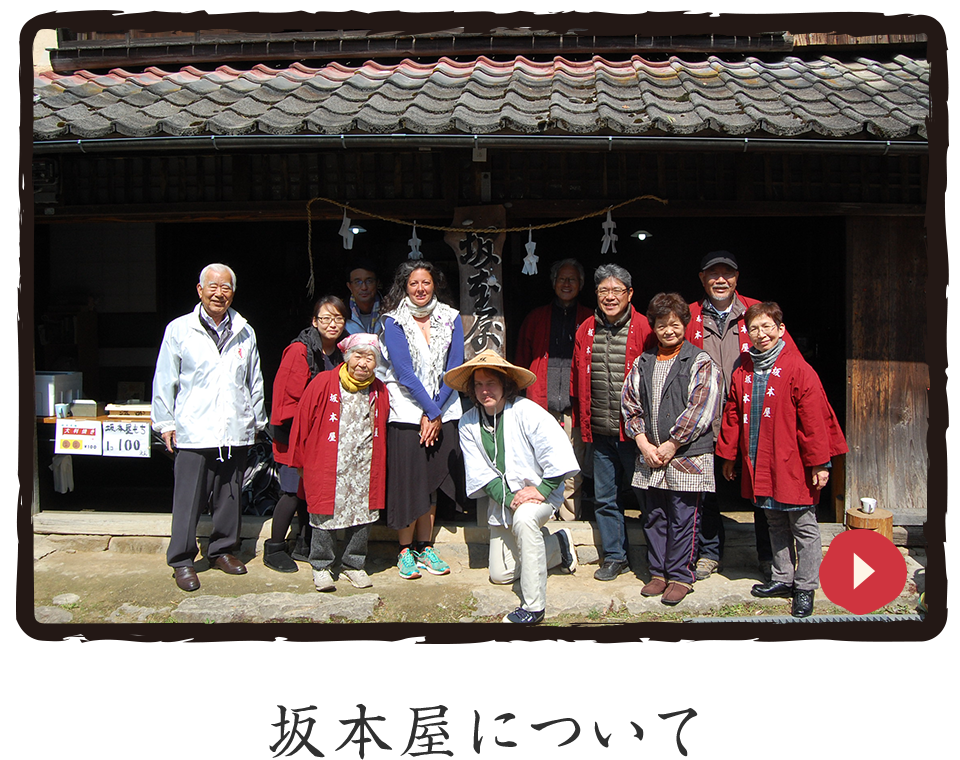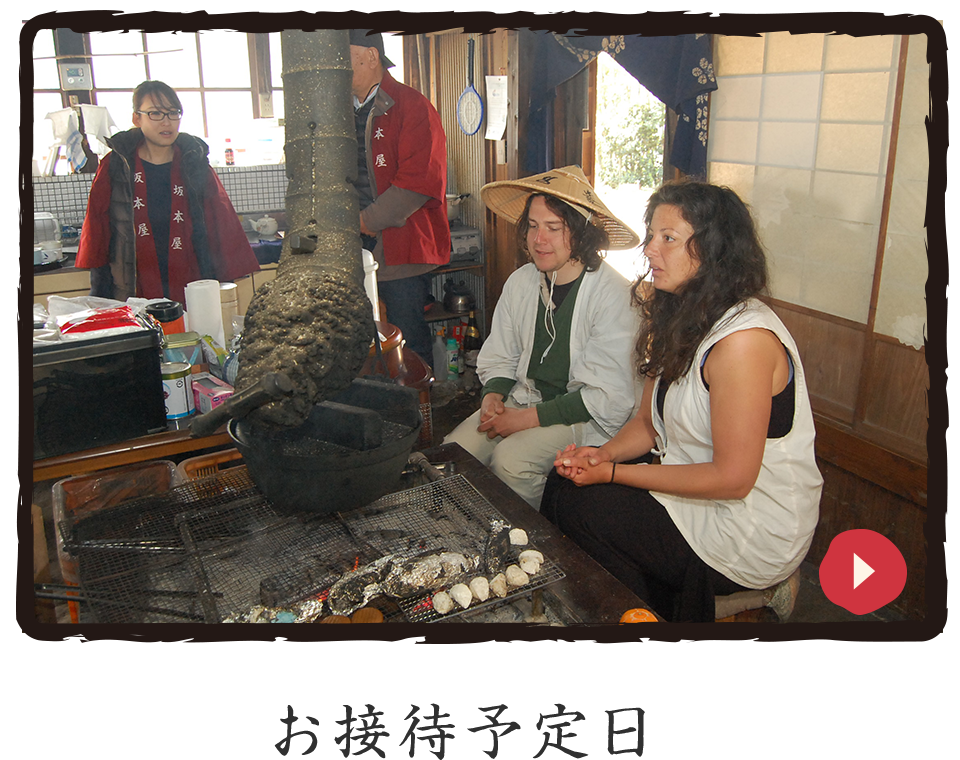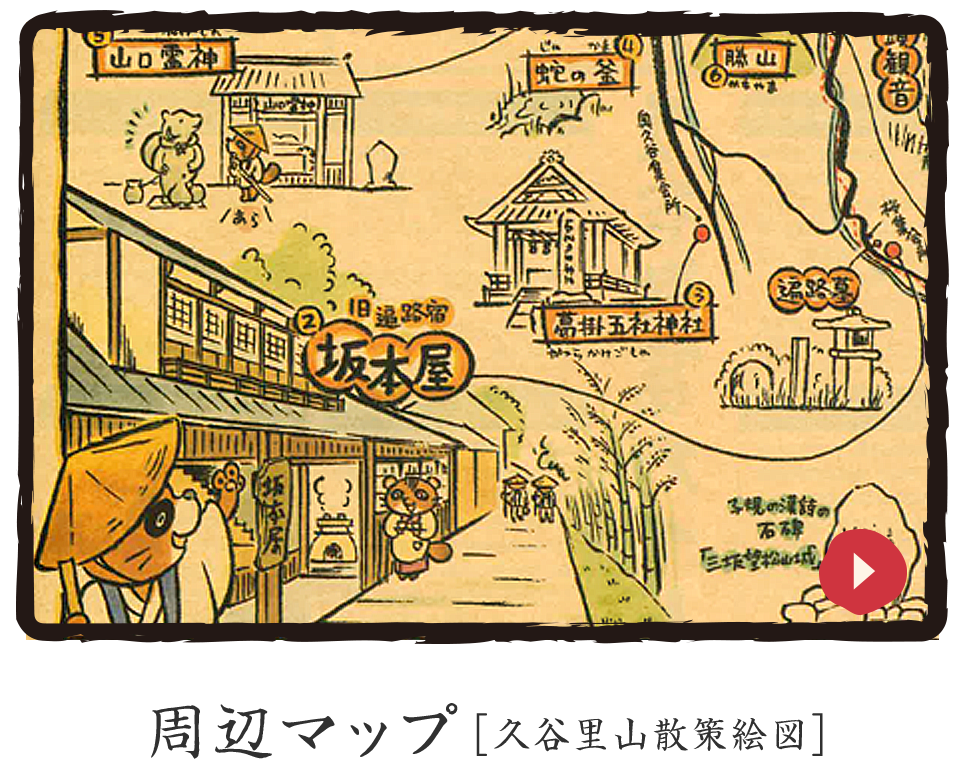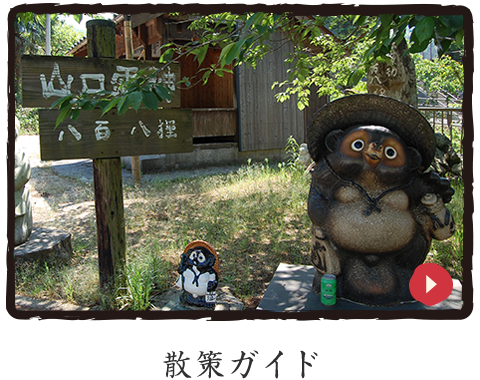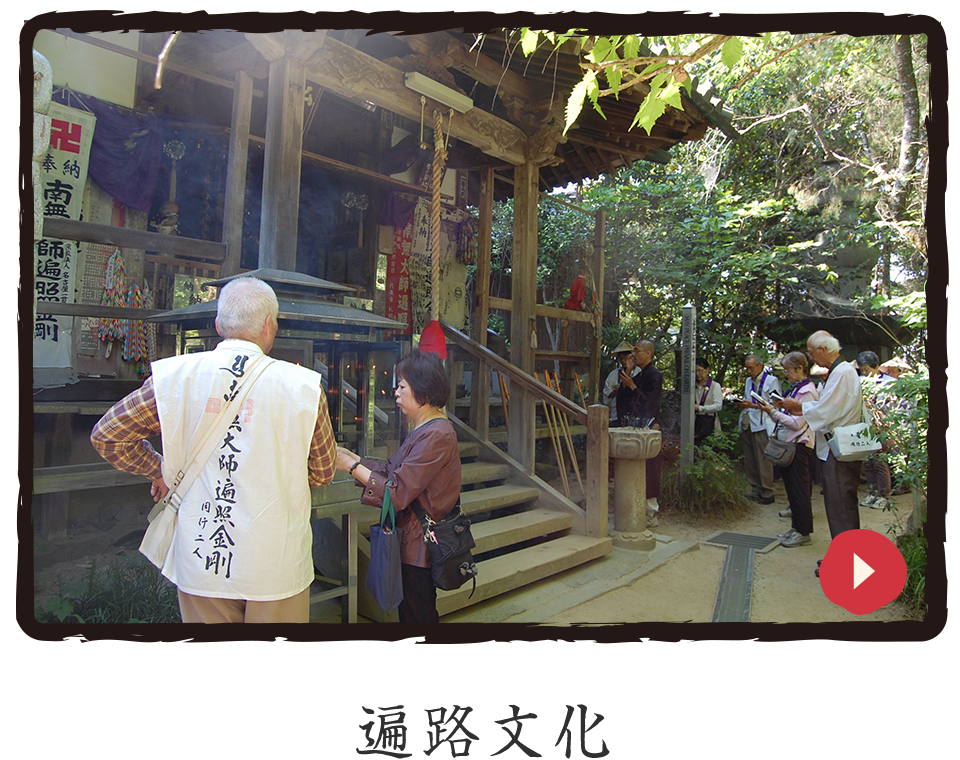遍路文化 Historical Background of Henro
四国遍路発祥地-伊予久谷
Iyo-Kutani: the Origin of the Shikoku Pilgrimage (Shikoku Henro):
四国遍路は今から約1200年前、弘法大師空海が、四国の山野や海辺で修業したことに由来すると言い伝えられています。
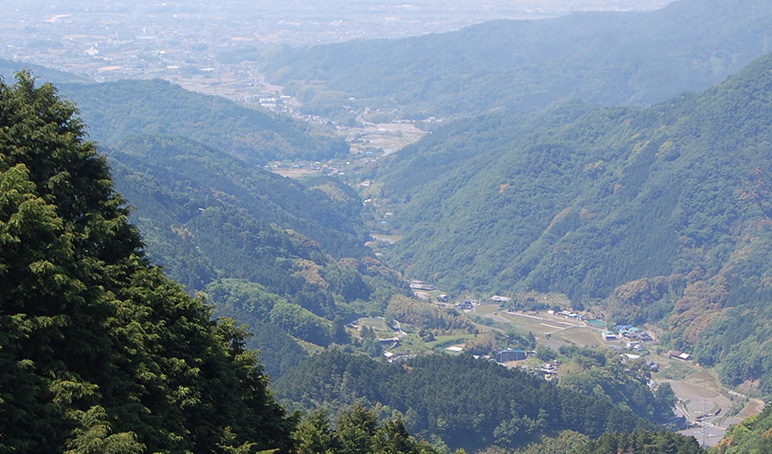 伊予の国に滞在していた空海がある日、みすぼらしい乞食(こつじき)僧の姿で、荏原(えはら、現在の松山市恵原町)の豪農、衛門三郎のもとを訪ね、托鉢を乞いました。
伊予の国に滞在していた空海がある日、みすぼらしい乞食(こつじき)僧の姿で、荏原(えはら、現在の松山市恵原町)の豪農、衛門三郎のもとを訪ね、托鉢を乞いました。
The Shikoku Pilgrimage has its origin with the Buddhist saint, Kukai, nowadays more commonly referred to by his posthumous name, Kobo Daishi. He was born on Shikoku about 1200 years ago and, after studying Buddhism in China, he returned to Shikoku often for ascetic practices in the mountains and seaside.
One day, during his stay in Iyo-no-kuni (present-day Ehime Prefecture), Kukai, as a poor mendicant monk, knocked on the door of Emonsaburo, a wealthy farmer, asking for alms.
衛門三郎は追い返しますが、乞食僧は毎日のように訪れます。業を煮やした衛門三郎が、手にしていた箒で僧が手にしていた鉢をたたき落としたところ、鉢は八つに砕けました。それからというもの、衛門三郎の八人の子供が次々に亡くなりました。
悲しみに暮れる衛門三郎の夢枕にある日、あの乞食僧が出現。弘法大師空海であることに気づかされます。衛門三郎は懺悔の気持ちから、田畑を売り払い、家人たちに贈与。大師を追い求め、四国巡礼の旅に出ました。
二十回もの巡礼を重ねましたが、大師には出会えません。今後は逆に回りますが、阿波国の焼山寺(現在の四国霊場12番札所)の近くの庵で、病に倒れてしまいました。
死期が迫りつつある三郎の前に、大師が現れます。三郎は今までの非を泣いて詫び、大師の「望みはあるか」との問いかけに、「来世には河野家に生まれ変わり人の役に立ちたい」と口にして、息を引き取りました。
Emonsaburo, refused to give him anything and shut the door. The mendicant monk, however, kept coming back day after day. Finally, Emonsaburo, became so irritated that he knocked the begging bowl out of the monk’s hands with a broom. The bowl broke into eight pieces. After that, Emonsaburo’s eight children died one after another.
Emonsaburo, deep in despair, saw the monk in his dream and realized that the monk was Kukai. Regretting what he had done, Emonsaburo, sold all his land and gave away all his money to his family to atone for his sin, and then set out to seek Kukai to ask for his forgiveness.
Even after circling Shikoku 20 times, Emonsaburo could not find Kukai. So he tried going the opposite direction, but he became very ill at the inn near Shosanji temple, in Awa-no-kuni (present-day Tokushima Prefecture).
There Kukai appeared before the dying Emonsaburo. Emonsaburo burst into tears and begged Kukai for forgiveness. When Kukai asked him “Is there anything you wish for?” Emonsaburo answered, “I wish to be reborn into the Kono Family and devote myself wholly to helping others.” After saying this, Emonsaburo died.
大師は路傍の石に「衛門三郎」と書き、その左手に握らせたといいます。大師の導きにより、衛門三郎の罪は浄められ、八人の子供たちとともに極楽へ渡り、後の人々から「遍路始祖」と崇拝されるようになりました。
久谷地区には、衛門三郎が八人の子供たちをそれぞれ埋葬した、八つの墳墓が現在も残ります。墳墓は、松山市が指定する文化財「八ツ塚群集古墳」として保存。衛門三郎が懺悔し、遍路として生きていった第一歩は、今もしっかりと確認することができます。
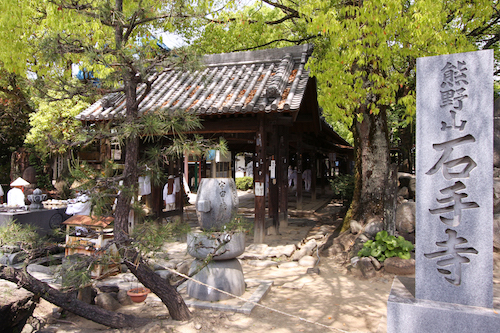 衛門三郎が亡くなった翌年、伊予国の領主、河野息利(おきとし)に長男が生れました。しかし、その子は左手を固く握って開こうとしません。息利は心配し、安養寺(現在の四国霊場第51番札所石手寺)の僧が祈願をしたところ、やっと手を開きます。すると、「衛門三郎」と書いた石が出てきたといいます。安養寺が後に「石手寺」と寺号を改めた由縁です。衛門三郎はめでたく領主として再来したのです。四国遍路は、懺悔を経て再生へと転じていくという道筋なのです。
衛門三郎が亡くなった翌年、伊予国の領主、河野息利(おきとし)に長男が生れました。しかし、その子は左手を固く握って開こうとしません。息利は心配し、安養寺(現在の四国霊場第51番札所石手寺)の僧が祈願をしたところ、やっと手を開きます。すると、「衛門三郎」と書いた石が出てきたといいます。安養寺が後に「石手寺」と寺号を改めた由縁です。衛門三郎はめでたく領主として再来したのです。四国遍路は、懺悔を経て再生へと転じていくという道筋なのです。
Kukai picked up a stone and wrote Emonsaburo’s name on it and placed it in his left hand. Thus, Emonsaburo’s soul was purified and he ascended to heaven to join his eight children. Later, Emonsaburo came to be worshipped as the founder of the Shikoku Pilgrimage.
In the Kutani area of Matsuyama City, you can see eight tomb-like mounds thought to be the tombs of Emonsaburo’s eight children. These tombs, the Yatsuzuka Gunshu Kofun (Yatsuzuka Tumuli Group), are preserved as cultural assets as a reminder of Emonsaburo’s great loss and his hard path to forgiveness.
A year after Emonsaburo’s death, the eldest son of Kono Okitoshi, the lord of Iyo-no-kuni, was born. Very strangely, however, the left hand of the new-born baby had a tightly closed fist which wouldn’t open. Very worried about this, Okitoshi asked the monks of Anyoji temple (presently known as Ishiteji temple, now the 51st temple) to pray for him, and finally the left hand opened. To their great surprise, the baby was holding a stone with the name “Emonsaburo” written on it! That is why Anyoji temple was later re-named ‘Ishiteji’ (literally, “stone-hand” temple). Thus, Emonsaburo was re-born as a lord. This story teaches us that the Shikoku pilgrim is a symbol of the path from atonement to rebirth.
お接待の文化 Osettai Culture
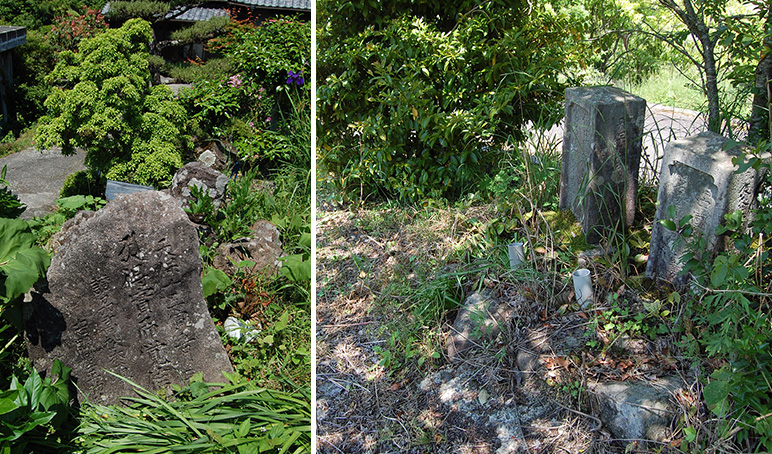 遍路始祖、衛門三郎の故郷、伊予久谷(松山市久谷地区)は、四国遍路を手厚くもてなす文化が今も息づいています。同地区の遍路地沿いには第46番札所浄瑠璃寺、第47番札所八坂寺を拠点に、江戸時代に亡くなったお遍路さんを埋葬した墓(遍路墓)や道標、常夜灯、安全を祈る石像「馬頭観音」などが点在しています。
遍路始祖、衛門三郎の故郷、伊予久谷(松山市久谷地区)は、四国遍路を手厚くもてなす文化が今も息づいています。同地区の遍路地沿いには第46番札所浄瑠璃寺、第47番札所八坂寺を拠点に、江戸時代に亡くなったお遍路さんを埋葬した墓(遍路墓)や道標、常夜灯、安全を祈る石像「馬頭観音」などが点在しています。
「お接待」とは、お遍路さんを無償でもてなす文化で、かつては米や穀物などの食べ物や、一夜の宿を提供していました。現在では、休憩のできる場所や喉を潤すお茶やお菓子などを提供することが主流となっていますが、その根には「同行二人」という信仰が受け継がれています。
「同行二人」とは、「お遍路さんは弘法大師空海と一緒に四国を巡礼している」との意。四国の人々はお遍路さんを「ありがたい存在」と受け止めているのです。したがって、お接待文化は、衛門三郎伝説に裏打ちされたものといえます。
In the Kutani area of Matsuyama City, the home of Emonsaburo, people have been cherishing the culture of osettai. Osettai is a form of offering; it used to include food, such as rice or grain, and lodging for the night. Pilgrims would give the rice to the lodging house to prepare for them.
Today, osettai generally means offering places to take a rest, tea to quench your thirst, or some sweets, but in whatever form osettai is offered, it is based in the belief of Dogyo Ninin (two traveling together). It refers to the idea that Kobo Daishi is with each person who makes the pilgrimage, so people in Shikoku always respect pilgrims.
In this way you could say that the culture of osettai is based upon the legend of Emonsaburo because it encourages the practice of osettai.
四国遍路の庶民化は、江戸時代から始まるとされています。坂本屋には、江戸時代から今日までの納札が保存されています。現在の建物は築約100年ですが、それ以前から遍路宿だったと推測されます。衛門三郎から約1200年、お接待の文化は、今も暮らしの中に息づいているのです。
The Sakamotoya building itself is about 100 years old, but it is highly probable that there was a pilgrim lodging here before that. The building marked the border of the Matsuyama domain and there was an official who would have checked travel documents. Even now walking pilgrims have to go about 30km with no place to stop until coming to Sakamotoya.
The Shikoku Pilgrimage became popular among the common people in the Edo era (1602-1868). Osame fuda (name-slips) dating from the Edo era to the present day are preserved at Sakamotoya. Graves of pilgrims of the Edo era (1602-1868) have been found in the area.
Nearby are two temples, Joruriji (temple 46) and Yasakaji (temple 47). There were guideposts, and stone lanterns that were lit at night to guide pilgrims and other travelers. There were also stone statues of Bato-kannon, a patron of travelers, to help insure a safe journey for pilgrims.


